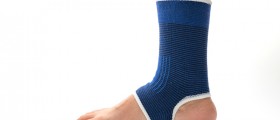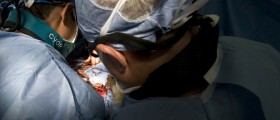
Introduction to webbed fingers and toes
Webbing, called syndactyly, is a condition in which there is an incomplete separation of the fingers or ties with the skin connecting the two. Sometimes it is more serious and involves the fusion of bones, nerves, blood vessels and tendons in the fingers and toes.
The webbing itself can extend partially up between the digits, sometimes just to the first joint, or though the entire length of the digits.
Polysyndactyly is when there is both webbing and a presents of extra fingers or toes.
This usually develops within the first six weeks of a person’s life.
Syndactyly sometimes occurs to people who have been seriously burned in fires, with the skin melting and then fusing to form the so-called webbing. In burn victims, it is less invasive because there is no bone fusion.
There is repair surgery, however, that can change the appearance of these toes and fingers and make them look more “normal.” The surgeries can also prevent the deformity from progressing as the child gets older.
Repair of webbed digits
Webbed toes and fingers can be prepared trough corrective or reconstructive surgery. Polydactyly can be repaired by surgical removals of the extra fingers or toes, but syndactyly can also be corrected surgically.
This is usually done by the addition of a skin graft that usually comes from skin taken from the groin area.
There are several types of surgeries available and they depend on the condition and the surgeon’s experience.
The procedure is performed under general anesthesia with the surgeon making incisions in the skin and then lifting the small flaps at the sides of the fingers or toes. After this, the flaps are sutured into position and an absent area of skin is left over. This area is then filled with full thickness skin grafts.
The surgery usually takes about two to four hours and then the foot or hand is usually put into a cast for a couple of weeks.
The person will stay in the hospital for a couple of days after the surgery and there will be swelling and bruising experiences. Pain medications are often given to the patient to make them feel more comfortable.
It is very important to keep the skin grafts damp because they tend to become dry.
The main risks in the procedure are those related to regular anesthesia risks and also the possible loss of the skin graft, along with circulation damage that may be caused by the bandages or casts, so in other words, there are not many possible complications and it is a fairly safe procedure.
















Your thoughts on this
Loading...